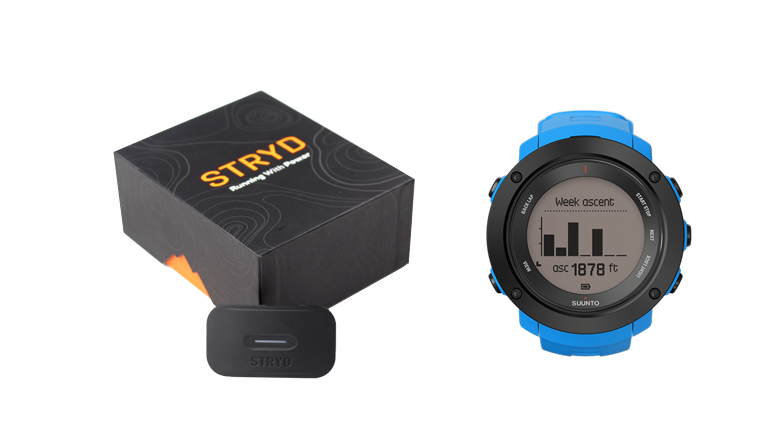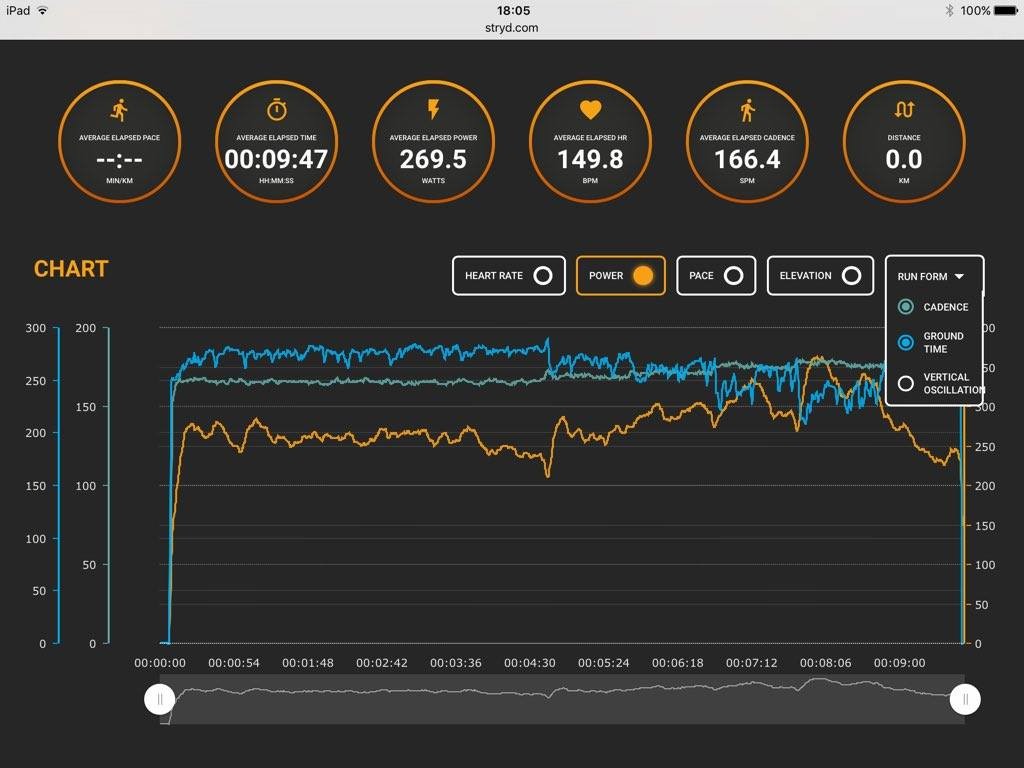Stryd is “the world’s first power meter for running”. But what the hell does that mean and why do we care? REVIEW: Tegyn Angel, Co-editor.
Power Meters have been at the top of every cyclist’s wish list for years; a perfect albeit tool to measure output in training and racing in a way that is independent of variables like fatigue, weather or inclination. Whereas a typical bio-feedback tool like a Heart Rate Monitor (HRM) measures your body’s response to training, a Power Meter measures the actual output of your effort Watts. On a bike it’s easy to calibrate your meter using known gear ratios and the like, but until Stryd no one had come up with a way to measure running Power outside of the lab.
The Stryd unit itself is like a slightly larger version of a HRM pod and is slightly smaller than a match box. This clips on to a strap that incorporates Heart Rate sensors and is worn around the chest like a traditional HRM. The placement is a little frustrating (especially given pre-release models clipped onto your shorts like a pedometer) but is presumably it’s to ensure that the measurement is made at the centre of body mass and isn’t influenced by the excessive movement of your arms, legs or hips. Paired to your watch (in our case a Suunto Ambit3 Vertical) or phone, Stryd replaces your standard HRM and now provides a realtime feed of Heart Rate AND Power data.
BRILLIANT! Now what…? Well, we’re still trying to work that out. We have a metric, a unit of measurement, but people are still trying to establish exactly HOW to use the information. This is cutting edge, early adopter stuff, so let’s start with what the marketing boffins at Stryd have to say about it, then we’ll give you our thoughts.
If you head over to stryd.com the first thing you’ll see is a pretty video (with some lovely Suunto cameo) which suggests that, paired with the phone App, Stryd can actively coach you toward a more efficient running technique. How? Think of it as a process of eliminating variables. Let’s say I’m running at 5:00 minutes per kilometre on a flat track. On my first lap I’m generating 300w and on the second this pushes out to 330w. What’s changed? My pace is the same and no other environmental variables are influencing things, so therefore it comes down to a matter of efficiency. The coach in my ear (via earphones from my phone) tells me to relax and focus on increasing my cadence. Very cool! 
In another example I’m aiming to keep a consistent effort through my run or race but I hit a steep hill and am reduced to a fast hike. My pace plummets and I push harder to try and bring it back up. My breathing quickens and I start to feel my pulse thumping in my forehead. A quick glance at my watch and I see that, while I’d been keeping a consistent 270w along the undulating low lands, my effort has now jumped to 340w and I’m approaching redline. I know intuitively, and now have an objective way of confirming, that I need to back off or I’ll bonk.
This all sounds great, but also a little gimmicky for the Average Joe. Unless you’re looking for those One Percenters, this onslaught of additional metrics might seem a little overwhelming. Surely I can work these things out on my own and just “run to feel”? Isn’t this just a glorified pedometer for the data obsessed Triathlete? I’m a Trail Runner, I don’t need it! Time will tell if that’s the case, but hold up a minute, let’s have a look at how we Mud Junkies might get some benefit from it.
Scenario 1: I have a tendency to over train, particularly when I introduce speed work. I feel good for a week or two and start to feel my body adapting, then I get the Man Flu. Theoretically, Stryd provides a tool to help identify Overtraining Syndrome before it gets too bad. Heart Rate has traditionally been used in this capacity, a technique that was popularised by Endurance Guru Dr Phil Maffetone. His advice was to keep a log of your training and match your pace to your average HR. Let’s say on the first week of February you ran your favourite 5km loop in 25 minutes (5:00min/km) and maintained a Heart Rate of 150bpm. In the third week of February you head out again and this time the same loop, at an average HR of 150bpm, takes you 27:30 (5:30min/km). One explanation for the decrease in pace, in spite of a stable pace and theoretically two weeks of improved fitness, is that your body is overstressed in one way or another. This is an awesome tool, but while HR is largely subjective, Power is Objective. I’ll admit I’m a little unsure of this given that training is about stimulating Subjective Adaptation, but it certainly sounds good on paper.
Scenario 2: I love running downhill and so does my girlfriend. However, whereas I can drop her like it’s hot once the angle gets life threatening, she leaves me in the dust when the hill is “runnable”. I feel clunky and slow, inefficient and genuinely amateur compared to the way she glides down the hill. Using Stryd I can play around with different technique adjustments until I reach a point where the Watts displayed on watch are as low as possible. Shorten my stride, increase the height of my heel kick, swing my arms differently, tense my hammies, keep my knees bent, point my toes, adjust my breathing. Because Stryd displays power in real time, without HR lag, I can now be my own technique coach and learn what makes my running more efficient.
Is Stryd the next big thing in Running? Probably not, but then decent GPS watches have only been around for about 10 years and Suunto didn’t release the Ambit 1 until early 2012 and yet now you’ll hardly find a trail runner without one. There’s no question that Stryd is revolutionary. However, all revolutions create an environment of confusion and uncertainty. Just as it takes time for people to learn what to do with their new found freedom and responsibility, it will take time for coaches and amateurs alike to learn the best way to train with Stryd.
Fortunately the folks behind Stryd have embraced this fact and their forum has become a thriving community of interested people actively contributing to the development and application of the device. More to the point, they seem to be listening to what people have to say!









